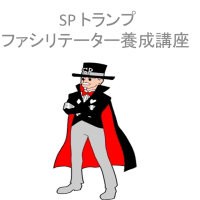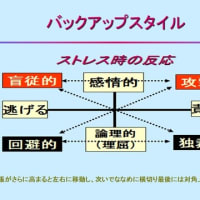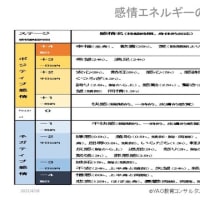5) Considering the Japanese national character due to differences in corona measures among island nations.
Taiwan, New Zealand ("N.Z."), the United Kingdom ("U.K. ") and Japan are all island nations, but their infection situations differ significantly due to differences in COVID-19 countermeasures.
In addition to those four island countries, the United States ("U.S."), which has the highest number of infected people globally, is added to the list to organize and discuss corona measures.
a. Behavioral Restrictions.
While N.Z., the U.K., and the U.S. have implemented lockdowns with penalties.
From the first to the fourth emergency declaration Japan implemented a loose regulation called "request to refrain from going out," without penalties and legal restrictions on private rights, which was reasonably practical at first but has become less effective with each successive statement (3-4 times) due to "self-restraint fatigue."
b. Border measures (border closures and handling of entrants)
Taiwan and NZ were quick to respond, implementing measures to ban entry of foreigners in "March 2020" and succeeding in containing the COVID-19. Japan suspended access from all countries and
regions until "the end of December 2020." Although it was relatively easy to "seal the border" to take advantage of its island nation status, I can't say that Japan has succeeded in containing the corona.

c. Infection tracing system
Each country operated an infection tracing system. Taiwan had successfully quarantined those people who were subject to quarantine in cooperation with the police. The Japanese national government introduced a tracing system called "COCOA," and local governments operated similar mobile phone applications. Still, they were not used to the extent that we can say they are being used. It is necessary to introduce mechanisms such as adding value to "IT measures" to be utilized, as with the My Number Card.
d. Economic bailout
Japan's economic bailout countermeasures account for about 42% of GDP, about 13% in the U.S., and about 24% in the U.K. Despite the generous measures of paying 100,000 yen per person, it can be said that the measures have been not successful in cost-effectiveness, as evidenced by the explosive number of cases in the fifth wave of infections.
e. The following is a list of the most common problems in the area. Mask measures countries other than Japan have taken strict measures, requiring the wearing of masks in public places and on public transportation and imposing fines on violators. Japan's "request to wear masks" is modest with no penalties, yet it is observed and has been effective for Japanese people who "worry about what other people think.”

F. Vaccine measures
In the U.S. and the U.K., where the number of infected people is exceptionally high, vaccination began in December 2020. Japan started the vaccination later in February 2021. The inoculation rate exceeded the U.S. at the end of September, and the inoculation is progressing at an excellent pace.
Minor Conclusion.:
Even if it is a gradual "request," the Japanese will be severe, patient, and practical because they will keep their decision. But if it continues many times, they will run out of patience, and the "request" effect will diminish. There is a Japanese saying:" if you touch the face of the Buddha three times, he will get annoyed." One possible reason for the delay in "sealing the border" is that the government focused on "rebuilding the economy" rather than prioritizing the "safety and security" of the people.
Although generous economic measures, especially the uniform payment of 10,000 yen to all citizens, have the aspect of "quickly" (in terms of the time it took to be distributed), it is thought that the idea of "equality" (exact amount to everyone) has emerged strongly. It is believed that mask-wearing is observed, and Vaccination progresses due to "worry about what other people think" and "doing one's best when there is a concrete and clear goal."
In addition to the five major elements of national nature that have been discussed. It should be noted that for the sake of international comparisons, those specific elements (including those with
5. Consideration of other specific elements of national character
In addition to the five major elements of national character that have been discussed. It should be noted that for the sake of international comparisons, those specific elements (one relevant topic) that highlighted the national character of the Japanese people must be considered. We added that even if there is only one relevant topic, there is a big difference compared internationally.
(1) Happiness
The happiness level of the Japanese is 88.3%, but children's mental well-being ranks 37th out of 37 countries.
The Japanese have a high level of happiness, 88.3% (very happy, somewhat happy), which is the index of happiness they consider themselves to be.
The most important things are family (44%), health/life (18%), and love (18%).
A survey by The Institute of Statistical Mathematics ("ISM")
What is unique about Japan's ranking is that while it ranks first in "physical health," which is calculated from childhood obesity, overweight, and mortality, it ranks 37th in "mental health," the lowest, which is calculated from suicide rates and life satisfaction among 15-19-year-olds.
(2) Views on Family
Family is important; 73rd out of 77 countries favor parental care.
98.2% of respondents considered family important. However, the respondents ranked 47th out of 77 countries compared to other countries.
The data also shows that more foreigners consider family more critical than Japanese. The percentage of respondents who "agree (agree/somewhat agree)" with the idea that "once they reach adulthood, they are obligated to take care of their parents for a long period" was 25.5%.
It ranks 73rd out of 77 countries.
Although the Japanese consider family necessary, the percentage of respondents who agree or somewhat agree with taking care of one's parents is low compared to other countries.
(3) Views on Work: "Working is not important" rises.
Views of work are changing. Japanese attitudes toward work and work-related issues are changing markedly, with a doubling of the number of respondents who answered that "working is becoming less important" as a "good thing" or "I don't mind" (a total of 21.1% in 2010 ⇒ 42.6% in 2019).
(4) View of Life
Middle-class awareness remained unchanged, while lower-class and upper-class awareness slightly increased.
74.4% are satisfied with their lives (2019), 42.2% are in the middle, 36% are in the lower and lower, and 16.5% are in the upper-middle and upper-class consciousness. It is slightly increasing over the previous survey (2010), with middle-class consciousness remaining unchanged and lower and upper-class consciousness barely growing. Another survey (NHK Broadcasting Research Institute) shows an increase in the low-income group, a decrease in middle-class consciousness, and a shift in class consciousness from middle-class to lower-class. The data also show that the sense of social conflict has weakened and that fewer people believe that poverty is their responsibility.
(5) Basic Personal Values Strict on Fraud
In addition to the aforementioned "safety" and "freedom," the other fundamental values necessary to the country are strictness against injustice and fraud.
Compared to other countries, "receiving medical benefits for which one is not qualified" ranks 22nd out of 77 countries, "cheating on public transportation fees" ranks 2nd out of 75 countries, and "tax evasion" ranks 3rd out of 77 countries.
(6) Views on Nature Symbiotic relationship with nature
Regarding their relationship with nature, 48% of the Japanese people agree that "humans must obey nature to be happy," and 41% agree that "humans must use nature to be happy." 6% said, "To achieve this, we must conquer nature," and 5% said, "other.
(7) Religious views Religion is growing less and less popular.
The survey asked: Do you have any faith or religious beliefs? The results showed that 36% of the respondents answered "Yes, I believe," and 62% answered "No, I don't believe or am not interested. (ISM)
What is your religion?" According to the ISSP survey below, 31% of respondents were Buddhist, 3% were Shinto, and 1% were Christian. "Buddhism" is the most common. By gender, 34% of men and 30% of women. And by age, 17% of those aged 18-39 and 40% of those aged 60 and older.
Religion is becoming more and more informalized.
Putting it another way, there is no doubt a growing shift away from the faith. However, the depth of involvement in religion is a matter of the heart. Even if people worship less frequently, we cannot say that they have become less religious.
According to the International Social Survey Program (ISSP) Survey 2019, in which the NHK Broadcasting Culture Research Institute participates
Trust in Religious Organizations" is extremely low in Japan, at less than 10%. At the same time, in the West, where Christianity has a higher status, it is somewhat higher, in the 30%-50% range.
(8) Life and Death
Views of life and death are diversifying, but suicide is unacceptable.
In today's society, as values diversify, views of life and death themselves are also diversifying and becoming more personalized. People should make their own decisions regarding life and death in various situations. The need to examine and establish one's view of life and death in such circumstances is one of the reasons for the increased attention being paid to this issue today. Regarding opinions on suicide, 82.3% of the respondents, regardless of gender or age, consider suicide unacceptable. However, 10% of the respondents accept suicide, and the younger the age group, the more likely they are to get suicide.
The coronavirus pandemic has also brought up the topic of death screening. Suppose there are not enough units for the number of patients who need ECMO fitted, which the Institute of Medical Science of the University of Tokyo did in December 2020. In that case, triage may determine the priority of patients to be fitted. We found that 44% of the general public had never imagined that there was "a possibility."
The issue of each person's death may be taboo.
(9) Views on Mass Media Internet Surpasses Newspapers
While Western countries have low levels of trust in the mass media, Japan tends to have exceptionally high levels.
Information about the mass media is obtained daily from newspapers and television. Therefore, "I get information every day" from newspapers and TV ranks first among the 48 countries. And the level of trust in newspapers and magazines is 69.3% (60.6% of 18-29-year-olds and 78.6% of 70-year-olds). Compared to other countries, confidence in newspapers and magazines ranks 4th out of 77 countries. Trust in television is slightly lower at 64.53% (58.46% of 18-29-year-olds and 72.6% of 70-year-olds). And it is ranked 8th out of 48 countries in the trust ranking.
As sources of information, the frequency of daily contact is 89.1% for TV news, 59.4% for the Internet, 56.8% for newspapers, 27.1% for cell phones, and 25.3% for conversations with friends and colleagues, 25.2% for social media, and 17.5% for e-mail. The Internet surpasses newspapers. Internet usage is highest among people in their 30s, at 85.4% daily, 8.4% once a week, and in their 70s, 22.6% daily and 7.9% once a week.
6. What do the Japanese want to be in the future?
The top three choices for what do the Japanese want to see in the future are as follows
1. Japanese culture and values should be respected
2. Building a society that enables people to live actively and achieve self-actualization
3. Deepen exchanges with Asian countries to make them more dependable
World Values Survey
And as for the characteristics (sub-personalities) they would like for their children, they emphasize "decisiveness" and "creativity/creativity. As for the characteristics (sub-personalities) that today's youth (working adults) would like to acquire in themselves, the most important are "Challenger," "quick arrangement," "Practitioner," and "Theorist." N = 827

























